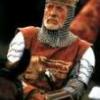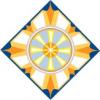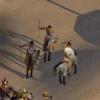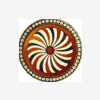Search the Community
Showing results for 'age of the aegean'.
-
All I can say is it happened to both Zaggy and I in the same game, on Aegean Sea. It wasn't instant as soon as the game started, he noticed it first, then maybe 10-15 minutes later, I did. Here's how the map was situated near the end of the game, not sure if it provides any helpful info: http://i.minus.com/iDzkS1FexsrKJ.png Relevant info: both Zaggy and I have Radeon HDs, both on Windows 7 64-bit. We have different drivers though, he's on 8.92 and I'm using 8.98. I know there is a driver update available but I tend to not update due to potential breakage Also this bug is relatively rare so upgrading drivers might not make a noticeable difference.
-
Previewing a map in the game setup screen.
Spahbod replied to Spahbod's topic in Game Development & Technical Discussion
Manually. I created a folder in session/icons/ called "mappreview" and placed the files there. There is a "nopreview.png" there that works as placeholder for maps that don't have a preview yet (which meant all maps except aegean sea). So that when someone creates a new random map and didn't make the screenshot, the game won't break. Edit: The name of the preview image is defined in the map's JSON file. -
Updated the map. Now the river's path is much more unpredictable than before. Updated the image and download file. If you don't see the new image, go to this link and then use Ctrl+R. Also my other maps which used the river system are updated (Aegean Sea and Guadalquivir River).
-
Guys with your help i want to compile a list of all the different ways people can learn about history. I am hoping that we can create a list of a large range of documentaries, movies, books and lectures that inform people about history. The content of the varies sources of info will be mainly directed towards people with a very low to moderate knowledge of history. At first we will probably focus more on Ancient history as this will perhaps contribute to o ad in a positive way, i will not however discourage any information sources that are to do with other periods of history from being added to the list. The only real requirements for any sources of info that are listed in this topic are that the source (book, doco, movie, lecture) or any other sources must be accessible to everyone. Ideally we would have all content that is listed being accessible for free but i don't think this should be a requirement for the moment. Obviously the content should be informative but it does not need to be non fiction so movies like Troy, Alexander the great, The centurion are some of the sort of thing i am looking for. Ah i would like to give some examples of books but i am not really big on reading although i am trying to change that. Anyways as i was saying i cant really give any examples of books so i would ask that you guys come up with a few to get the ball rolling. I love documentaries but its been a while since i watched any due to two annoying little conditions known as blepharitis/dry eye so i cant remember the names of them of the top of my head, but hears a link to a site which has a couple of goodies. http://topdocumentaryfilms.com/category/history/ As for lectures, these will probably be more for people who are interested in a more in depth understanding of history as appose to just wanting to have a general knowledge of it. I think the best one to start of with is this one which is a 24 lesson (approximately 1 hour 15 mins per lesson( lecture on introduction to Greek history and has been done by Donald Kagen, an Ancient Greece professor at Yale university. Only thing you really to help you understand the lessons are some maps of the Mediterranean, particularly in areas around the Aegean sea and a copy of the illiot and the Elliot translated to modern English. You can watch all 24 lessons for free at the following link. http://www.youtube.com/user/YaleCourses#p/c/0/9FrHGAd_yto So guys i need your support in developing and expanding this currently tiny tiny list. If you have any questions on the sort of content that i am after please ask. Do not worry about presenting the name of your books/movies/website/lectures or w.e else in a formal way as that process will be done later on when we have a significant amount of sources/content to list. Sorry you may have to copy and paste the links into your address bar, i am in a hurry and dont have time to work out how to insert links that take you directly there. Anybody else who has already compiled lists with similar content to what i am after please let me know because i would like to join forces. Sorry i did not have enough time when writing this post to check on the forums for similar topics so errrrrrrrr pls don't be mad if you already have a similar idea to this going on. I look forward to hearing comments/feed back for this idea and start contributing to the list right away please!.
-
I really like the idea of customizing your armies, which is an idea I've had for some years now. However, I think it would add too much work for our game and constitute a rather large amount of feature-creep. My ideal RTS though has customization, as it is in my 'Age of the Aegean' game design.
-
Nah. If you wanted to make some real-world maps, go ahead. We might make a new 'sort' in the game setup map list called "real-world" (where you choose Demo, Random Map, All, etc.) Maybe we can coordinate the areas we make. I think these would be good: - Greece - The Aegean Sea - Italy and Illyria (Split by the Adriatic Sea) - Sicily and Magna Graecia (Lower Italian Peninsula) - North Africa (Tunisia, Carthage, Numidia) - Upper Egypt and Palestine - Gaul (France, Belgium, Netherlands) - Iberian Peninsula (Spain, Portugal) - The British Isles - Syria and Mesopotamia - Asia Minor (Turkey)
-
Thats not true, the hoplite defined the hellenistic civilisation, until the makedonians thought of the phalanx to complement their cavalry, and makedonians technically arent hellenes, they arent even greek. (i think) The makedonians Had nothing to do with the hellenistic time period, for the most part. Alexandros Just conquered greece (i think?) and took his army over the aegean and took everything in a rather > direction, Mainly because the persians would have expanded further should they not done so. and because he wanted land and so did his men.
-
I've also read that the Dorian invasion isn't considered a certain thing anymore. But it's not my area of expertise. I found a website with some info about the Egyptian military: http://www.reshafim.org.il/ad/egypt/timeli...ndex.html#state and about ships (scroll down a bit): http://www.reshafim.org.il/ad/egypt/timeli...ex.html#economy Like the Age of Bronze site for Aegean archaeology, this isn't by a scholar but hopefully a person who is using scholarly sources (I haven't taken the time to see what they cite). EDIT/Update: Reshafim's sources are all over the place. Some pages have a scholarly-looking bibliography, some pages cite no sources at all. The timeline page is to be avoided.
-
^ I think the Dorian invasion theory has been, or is in the process of being, discredited by modern archaeologists. Though I'm not entirely sure about this. They might be leaning towards a "Dorian" migration, or towards that Mycenean society collapsed because of famine and natural disasters. Anyway, I'd have to spend time looking stuff up, but I'm going to bed right now. Anyway, its a moot point, I think. I tend to agree with Mythos here, though I'd like to add the Estruscans (it is suspected they had connections to Anatolia) to the list of people whom I suspect fled from the Aegean during this period of turmoil.
-
Wonderful sources! This is certainly a warship. Some of those Egyptian ships are very similar to the Phoenician designs, but some are rather different IMHO. According to one of your links, Pharaoh Sahure commissioned Phoenician/Canaanite shipbuilders to build his navy.That boat excavated from the Old Kingdom was 142 feet (43.3 meters) according to this textbook. These two only bring up 403 Forbidden errors for me. It looks like it covers the whole Aegean Bronze Age.Thanks for posting these! I'm not sure but this appears to refer to Middle Helladic depictions. In any case, contemporary Levantine and Anatolian designs evidently exist and it should be possible to track them down as well.
-
I can imagine both Myenaeans and Egyptians having decent navies. And the early Philistines had Aegean cultural affinities and manufactured Mycenaean pottery, so they could have been Greeks, or included some Greeks.
-
Hmm, Etruscans might work. They are interesting because the language they spoke was a language isolate, not related to the Indo-European languages around them. I'm not sure how much we actually know about their language, but I know they wrote in the Greek script. Same thing applies to the Minoans (although some researchers believe that Minoan, Etruscan, Rhaetian and Lemnian were part of a pre-Indo-European language family called Aegean or Tyrsenian). I think I might just stick with the six I have now... Btw, I'm sort of waiting until a later edition of 0 AD comes out to actually start modelling, because I think that some of the Persian units look like they would make good bases for these ancient units.
-
i think a good alternate mode (kind of) would be to have "random" maps that simulate a real location like in AOK, preferrably one for each civilization: Maghreb (Carthaginians) Britannia (Britons) Western Europe (Gauls) Near East (Macedonians) Aegean (Poleis) Iberian Peninsula (Iberians) Persia (Persians) Mediterranean (Romans) a "hunger" mode would probably be pretty good: triggers slowly reduce your stores of food (say, ten units of it every minute) so that you not only have to keep gathering food but also need to be careful how you use it
-
Hiram, as I said previous in this thread, I had a similar idea to yours. The ancient civilisations before the rise of Greece. Having six factions, replacing the old ones in 0 AD. Egypt Persia Mesopotamia (Babylonia/Assyria) Hittite Mycenean Greeks (there could be also a "Aegean" faction, with Minoans/Myceneans as subfactions) Phoenicia OR Judaea Since the idea is not too different from yours, it would be apropriate if we could work together. I have actually nearly no graphical or modelling skills, but if you do, then it would be great if you considered forming a modteam. I did actually some research about Egyptians and Hittites, but not much. I will start to investigate more time in this when the 0AD alpha comes out.
-
??? Linear B was abandoned and forgotten at the end of the Aegean Bronze Age, while the Linear A, Phaistos Disk, and Cretan Glyphic writing systems were all abandoned centuries earlier. The Greek alphabet was adopted during the Archaic, hundreds of years after the end of the Aegean Late Bronze Age. There is no similarity whatsoever between the Archaic Greek alphabet and the Bronze Age writing systems, let alone any written records that fall within the considerable temporal and morphological gap between Linear B and Archaic Greek. Linear B was logosyllabic and was missing several consonants which are present in the Greek alphabet, making its use for Mykenaian Greek rather awkward. The Phoenician script was an abjad*, which Archaic Greeks turned into an alphabet by taking certain consonants not present in Greek (such as Aleph) and using their symbols for vowels instead, then making up some more symbols for the other vowels. And you'll have an easier time seeing the similarities if you compare using the Archaic Greek alphabet, not the modern one whose letters are shaped rather differently and which is missing some Archaic letters, such as Qoppa and Sampi. You cannot possibly expect all the letters to have the exact same pronunciation when they are adapted from one language to a different language that isn't even in the same language family, especially when we are talking about languages that were used over time by people with different dialects, who adapted the letters to their needs as they went. Just look at how the Roman alphabet is used to write Latin, Mandarin, Finnish, Gaelic, and Hmong, and compare those pronunciations to the letters in English! Of course, the Greek language was already spoken in Greece during the Late Bronze Age and recorded in Linear B, and was not borrowed from the Phoenicians. But it's now agreed that Linear A was not designed for the Greek language, leading to Linear B's poor fit for Greek since it was adapted from Linear A, and the Phaistos Disk and Cretan Glyphic scripts probably weren't for Greek either. *Abjad - a script having only consonants. All languages have spoken vowels, including Semitic languages, but Semitic and Cushitic vowels are determined partly by grammar and the languages are legible to fluent speakers even without written vowels. Other Afro-Asiatic languages, like Egyptian and Hebrew, were also written without vowels because recording the vowels wasn't necessary. Nowadays modern Hebrew and liturgic Coptic are written with vowels (Coptic using an alphabet derived from the Greek letters), but earlier Hebrew and ancient Egyptian weren't. I don't know whether Arabic is written with vowels, though.
-
Read this: Bibliographie: • Crouwel, J. Bronzezeitliche Wagen in Griechenland. In: M.Fansa/St.Burmeister (Hrg.), Rad und Wagen. Der Ursprung einer Innovation. Wagen im Vorderen Orient und Europa. Archäologische Mitteilungen aus Nordwestdeutschland. Beiheft 40 (Oldenburg 2004) 341-346. • Littauer,M.A. und J.H. Crouwel 1983. Chariots in late Bronze Age Greece. Antiquity 57. 1983. 187-192. • Crouwel, J. Chariots and other Means of Land transport in Bronze Age Greece. Allard Pierson Series. Studies in Ancient Civilization 3 (Amsterdam 1981). • Richter,Th. Der Streitwagen im Alten Orient im 2.Jt. v.Chr. – eine Betrachtung anhand der keilschriftlichen Quellen. In: M.Fansa/St.Burmeister (Hrg.), Rad und Wagen. Der Ursprung einer Innovation. Wagen im Vorderen Orient und Europa. Archäologische Mitteilungen aus Nordwestdeutschland. Beiheft 40 (Oldenburg 2004) 507-514. • Crouwel, J. Der Alte Orient und seine Rolle in der Entwicklung von Fahrzeugen. In M.Fansa/St.Burmeister (Hrg.), Rad und Wagen. Der Ursprung einer Innovation. Wagen im Vorderen Orient und Europa. Archäologische Mitteilungen aus Nordwestdeutschland. Beiheft 40 (Oldenburg 2004) 69-86. • Plath. Pferd und Wagen im Mykenischen und bei Homer.In: B.Hänsel u.S.Zimmer (Hrsg.). Die Indogermanen und das Pferd (Budapest 1994) 103-114. • Drews, R. The coming of the greeks. Indoeuropean Conquest in the Aegean and the near east. (Princeton/New Jersey 1988) 84-148.
-
The Mykenaian style of warfare was very different to the post-dark age Greek armies. Even in the archaic period massive advances were made, such as with the Hellenized phalanx being formed and the huge development of weapons and armour from the 6th century BC onwards. Chariots were strictly a form of transport or leisure during most of the archaic era onwards, though richer men may have served as cavalry in the archaic period. As for Trojans being Babylonians, that sounds like quite controversial thinking, as only the very furthest south-eastern tip of Turkey was Mesopotamian, let alone Babylonian. The Trojans were simply Anatolians with an Aegean culture. That book is really good though, and as expected has fantastic artwork!
-
Actually a bunch of stuff in "Age of the Aegean" were features I proposed for 0 A.D., but were rejected, LOL!
-
Oh, I have no doubt, Paul, that if we can make it in the manner in which we want to that they will come to play it, and if they play it and like it they will create for it, and some will even go so far as to recreate it in ways we havin't even thought of... such is the mob of creativity that has been clamouring at our door for several years now impatient for us to 'get on with it'. That latent waiting mob is so large that we couldn't possibly accomodate them all by putting them onto the development team else they'd overwhelm us and the job would never get done, so it is our task to provide the foundation from which they may exercise it as best we can and then let them have go at it. Can thee also see Icarus flying about high above the Aegean as a modded eagle?
-
What Would You Do If...?
Mythos_Ruler replied to Mythos_Ruler's topic in Introductions & Off-Topic Discussion
This is after the Persian Wars (where Greece united to defeat the invading Persians) and before the Peloponnesian War (where most Greeks took sides with either Athens or Sparta in a long and terrible war). Sometime around, oh, 450 B.C. The Delian League was the alliance between Athens, Euboea, the Aegean islands, Corcyra, and the cities of Ionia. This alliance eventually became the Athenian Empire. Conversely, Sparta had a similar "league" - the Peloponnesian League, which included pretty much the entire Peloponnesian Penninsula (except Argos - Sparta's blood enemy).







